SWELL – Shared Waters Enhancement & Loughs Legacy Project (2021)
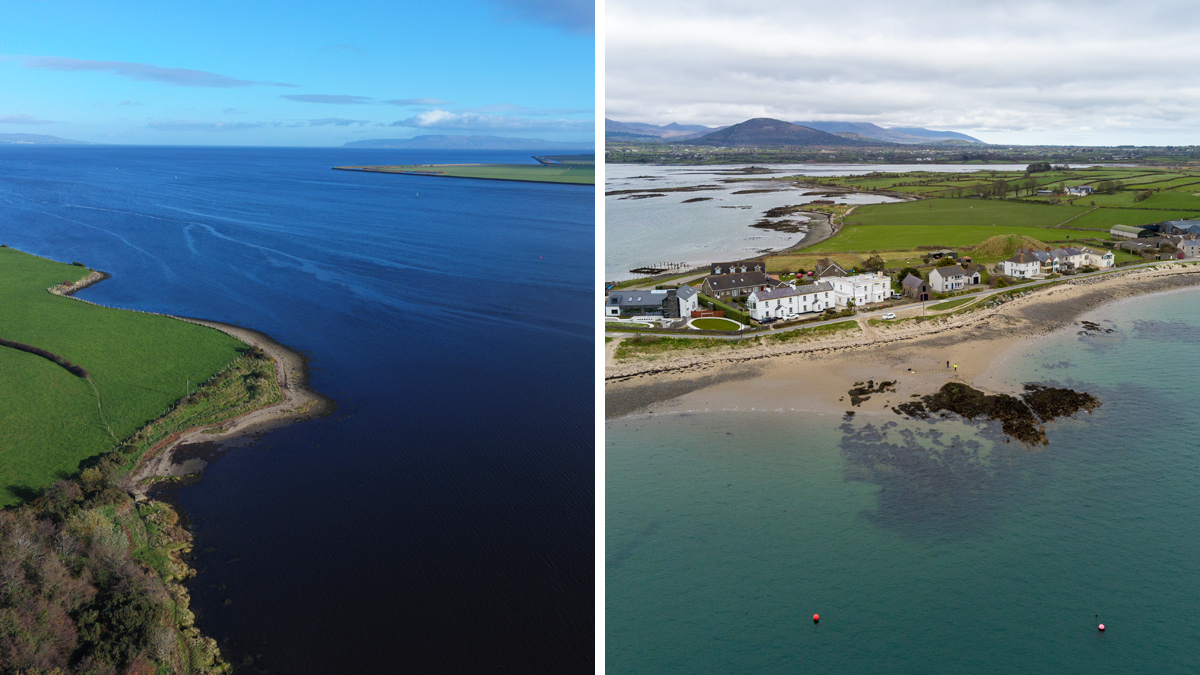
(left) Lough Foyle and (right) Carlingford Lough - Courtesy of Loughs Agency
The Shared Waters Enhancement & Loughs Legacy (SWELL) project is an extensive programme of work being led by NI Water working in partnership with Irish Water, the Agri-Food & Biosciences Institute (AFBI), Loughs Agency and East Border Region. Funded under the EU’s INTERREG VA Programme, managed by the Special EU Programmes Body, the €35m project involves the construction of new wastewater treatment works as well as upgrades to sewerage networks on both sides of the NI/Ireland border to enhance the quality of water in the shared waters of Carlingford Lough and Lough Foyle. The improvements to the wastewater assets will help contribute to raising the current EU Water Framework Directive (WFD) status of ‘moderate’ to ‘good’.
Background
Strategically, the four-year project will culminate in the development of a unique ecosystem model that can be used to identify how further water quality improvements can be made in these shared waters. Match-funding for the SWELL project was provided by the Department of Agriculture, Environment and Rural Affairs in Northern Ireland and the Department of Housing, Local Government and Heritage in Ireland.
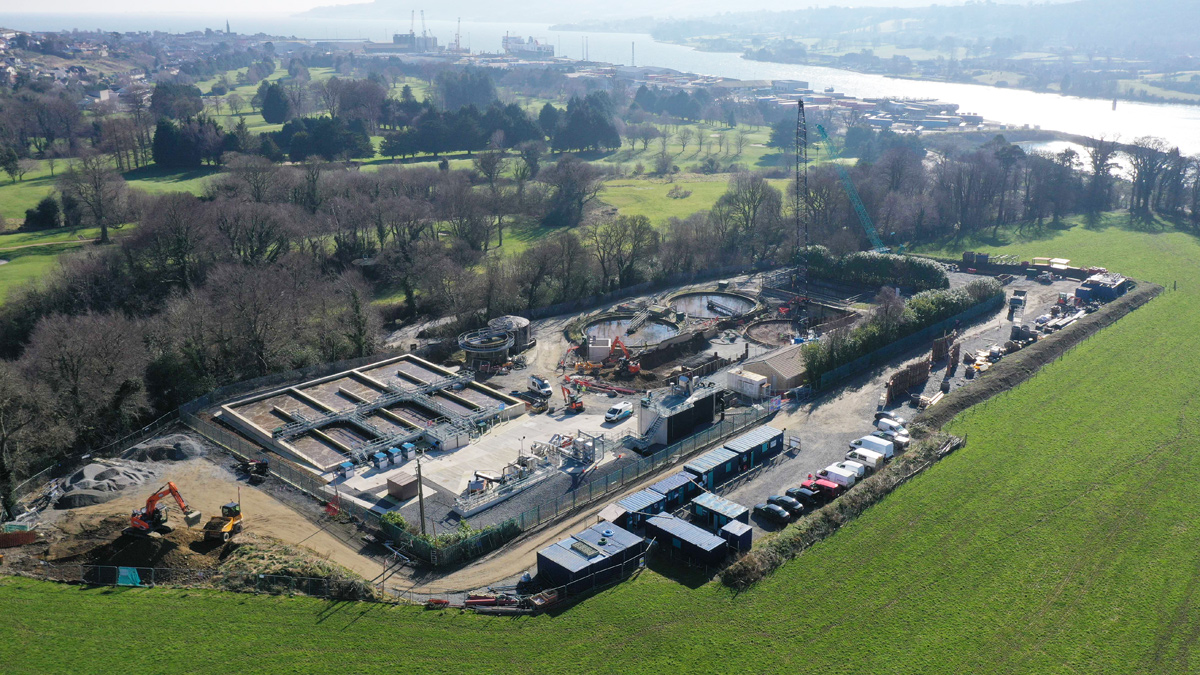
Warrenpoint WwTW – Courtesy of NI Water/SWELL
Strategic approach
Compliance with the WFD requires an integrated approach to the sustainable management and protection of water resources across multiple sectors and national boundaries. SWELL adopts a cross-border management strategy to ensure provision of the necessary water quality improvements within the shared waters.
The desired improvement to water quality is being implemented by means of increasing the quality and/or decreasing the quantity of wastewater discharging to receiving water bodies deemed to be impacting on the shared transitional waters.
The reduction in this ‘end of pipe’ pollutant load is the only mechanism by which the project can be considered to have met its INTERREG VA programme output indicators, since many other external factors have an impact on achieving ‘good’ WFD status.
What does the project involve?
The SWELL project involves a total of eight wastewater infrastructure upgrades, as well as catchment studies and ecosystem modelling within the Carlingford Lough and the Lough Foyle drainage basins. The majority of upgrades involve constructing new wastewater treatment works to deliver a higher quality discharge as well as providing storm storage to protect the receiving watercourses, and ultimately the shared waters, from stormwater spills.
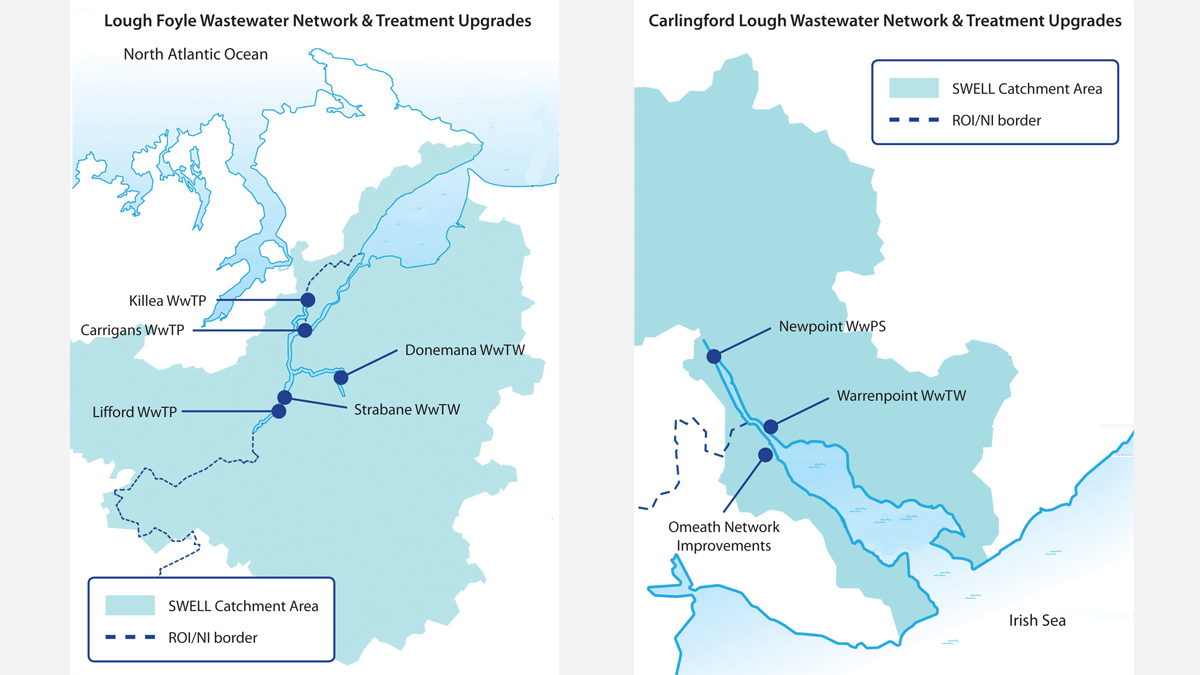
Diagrams showing the SWELL projects catchment areas and locations of the eight sites – Courtesy of SWELL
The capital projects are being undertaken on both sides of the border by NI Water and Irish Water working in partnership. The investment under the SWELL project will ensure wastewater is treated and discharged in compliance with EU regulations.
Work on the four NI Water assets got underway in April 2019 and was completed by March 2021. The Irish Water upgrades commenced in spring 2021 with turn of flows expected by the end of the year.
A brief description of the capital work packages, by catchment, is detailed below. [Please use the links below to read the full case studies on the completed NI Water projects]. The solutions outlined are being implemented to serve catchment needs over a 25-year projection horizon.
Carlingford Lough
Warrenpoint WwTW (NI Water): Completed December 2020
Upgrade of the existing treatment works to increase treatment capacity and address potential loss of untreated wastewater to Carlingford Lough.
Operational problems at Warrenpoint were due to increased development within the catchment over recent years and excessive flows being pumped to the inlet works. This problem was exacerbated by network infiltration/tidal ingress and inadequate flow balancing at the WwTW. A new inlet works, activated sludge process and attenuation tank were among the new assets constructed to increase treatment capacity and improve inlet flow management during periods of heavy/prolonged rainfall.
Newpoint WwPS (NI Water): Completed March 2021
Newpoint Wastewater Pumping Station operates with three wastewater pumps transferring flow (approximately 500 litres per second) to Newry WwTW, as well as four storm pumps that pump storm water flows to two storage tanks within the WwPS site. Under the SWELL project, new coarse screening equipment was provided to protect the existing pumps from blockages and potential loss of wastewater to the adjacent Newry River. Fine screening apparatus installed on the storm tank overflow provides further protection to the river during periods of prolonged heavy rainfall.
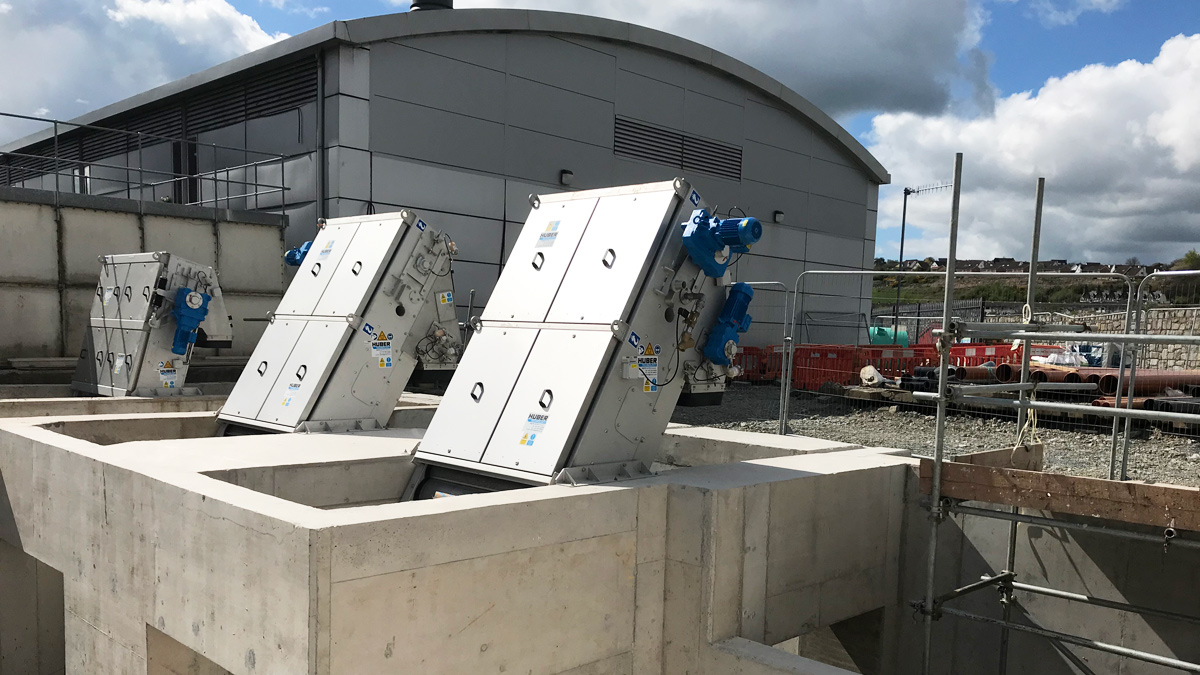
Newpoint WwPS – Courtesy of GRAHAM
Omeath Network Improvements (Irish Water): Commenced August 2021
The capacity of the sewer network in Omeath is being upgraded to transfer more wastewater to a new treatment plant that is currently being progressed by Irish Water (separate to the SWELL project).
In order to overcome the current deficiencies in the network, as part of the SWELL project Irish Water will complete CCTV survey of 1,857m of foul and combined sewer and internal survey of 60 manholes; relining of 1,363m of foul and combined sewers; localised repairs to 11 sections of foul and combined sewers (total length 494m) and repairs to 38 manholes.
Lough Foyle
Strabane WwTW (NI Water): Completed October 2020
The upgrade of Strabane WwTW included the construction of a new inlet reception chamber with new screw pumps to lift Formula ‘A’ flows to the existing preliminary treatment works. During periods of prolonged heavy rainfall, flows greater than storm flows are now screened to 6mm and pumped to the receiving watercourse. A new inlet balance tank was constructed at a high level, sized to deal with normal operational flows. During storm events additional flows are diverted via the overflow weir to the existing storm tanks with screenings caught in a new 6mm side weir screen and returned back to the inlet works for treatment.
Donemana WwTW (NI Water): completed February 2021
A modern replacement WwTW comprising inlet works, two new primary settlement tanks, three new rotating biological contactors, two new final settlement tanks, a refurbished storm tank and a new sludge holding tank. To facilitate the phased demolition of the existing works and construction of the new works, a compact temporary treatment plant was set up to maintain treatment capabilities in line with the required consent standards.
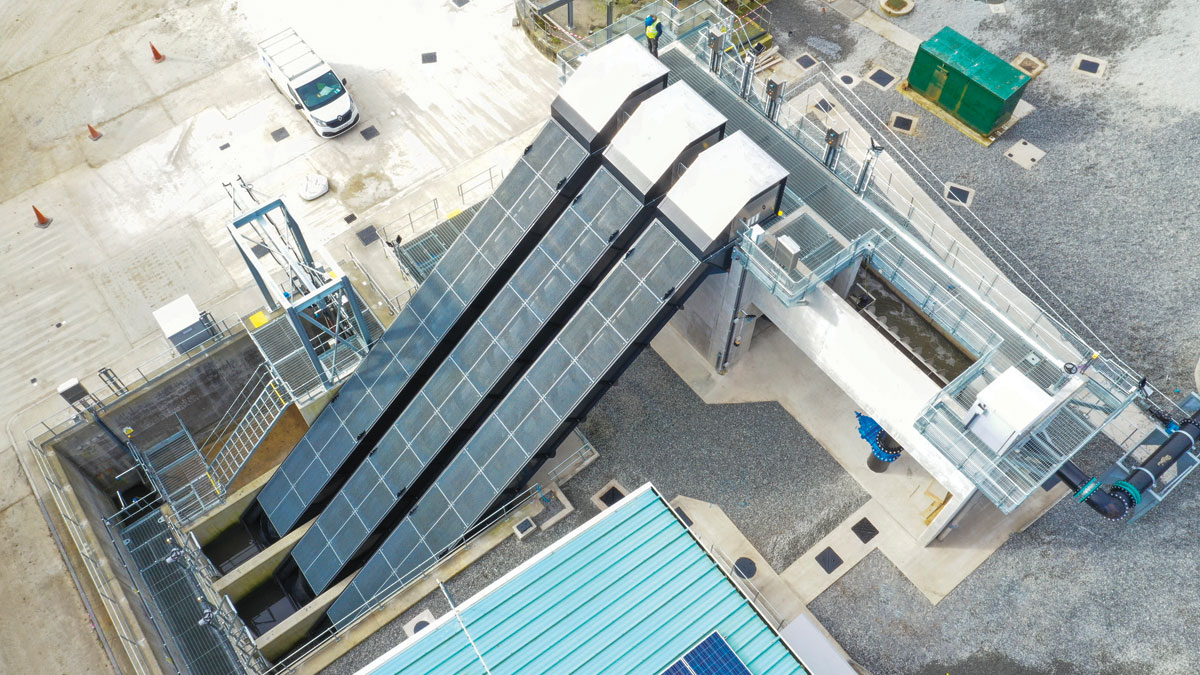
Strabane screw pumps – Courtesy of BSG Civil Engineering Ltd
Lifford WwTP (Irish Water): Commenced May 2021
The new wastewater treatment plant at Lifford will provide secondary treatment using Rotating Biological Contactor technology. The new plant will have the capacity to treat up to 3,000 population equivalent (PE) of wastewater.
This will cater for an increased wastewater treatment capacity, allowing for future development and population growth in the area. The SWELL programme of work also includes upgrades to parts of the sewer network.
Killea WwTP (Irish Water): Commenced June 2021
Construction of the new Killea Wastewater Treatment Plant will provide secondary treatment using rotating biological contactor technology, with a design capacity of 800 PE.
Carrigans WwTP (Irish Water): Commenced June 2021
The upgrade at Carrigans involves the decommissioning of the existing Carrigans WwTP septic tank – converting this to a storm tank – and constructing a new pumping station at the site.
A new 3,500m long rising main will transfer the full Carrigans load to St. Johnston WwTP for treatment.
Unique ‘legacy’ model
Setting it apart from other wastewater schemes, the SWELL project includes for an ambitious modelling strategy that seeks to develop as its legacy a unique ecosystem model for both the Lough Foyle and Carlingford Lough drainage catchments. This ecosystem modelling approach with built-in source apportionment, represents a first-time integration of urban drainage, river, coastal and ecology models on a catchment-wide cross-border basis.
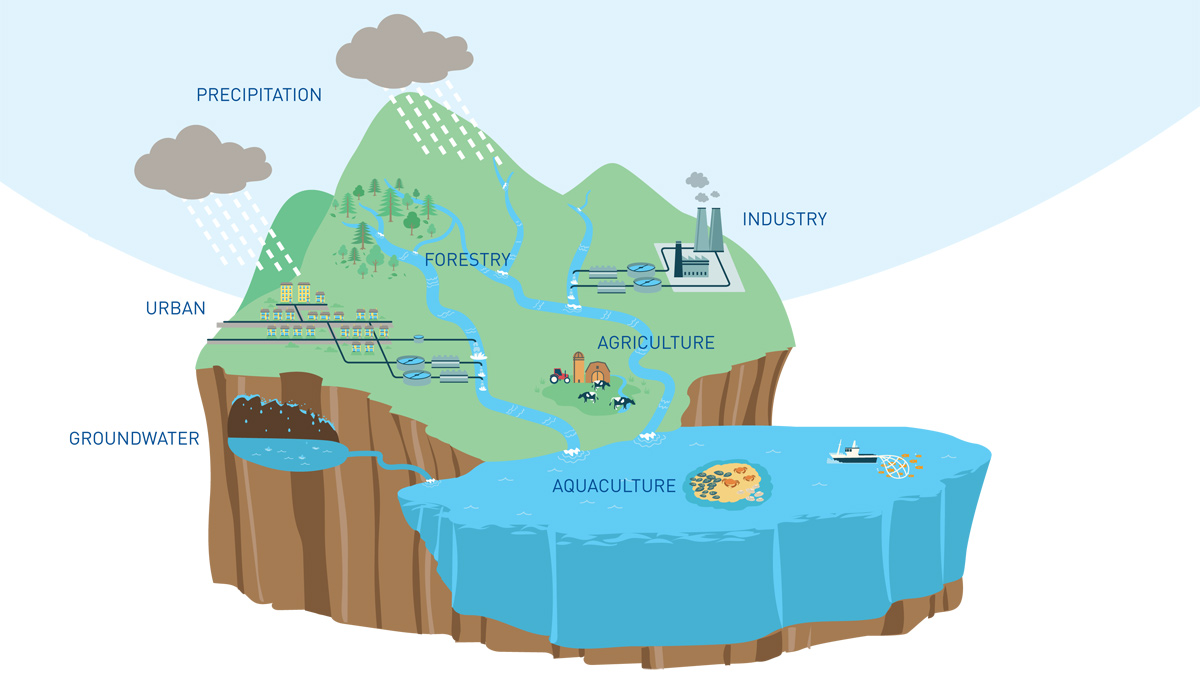
Legacy model – Courtesy of SWELL
Through extensive catchment investigations and the use of innovative modelling techniques, the SWELL ecosystem models can be used to track the pathways of nutrients and contaminants from wastewater, industrial or agricultural sources to determine their impact on the environment within both sea loughs.
The models will be used by the water utilities to facilitate water quality compliance assessments with respect to the EU Water Framework Directive and will inform sustainable asset planning through the apportionment of bacterial and nutrient loading contributions from wastewater and diffuse agricultural sources.
Once the SWELL capital wastewater asset upgrades have been completed, the models can validate that the required INTERREG VA programme outputs and results indicators have been achieved. Subsequently, on completion of the SWELL project, the ecosystem models will be held in public ownership to provide a sustainable legacy tool for cross-border use by water utilities, environmental regulators and other stakeholders.
Ultimately, these models will provide as a legacy a useful platform for future engagement and the progression of an evidence-based decision-making approach to legislative compliance that builds on the skills, relationships and investment planning techniques developed by the SWELL project.
Modelling progress
Before beneficial use of any upgraded sites was achieved, AFBI undertook an extensive sampling exercise in the two catchments to provide baseline data on the existing water quality. 24 sites in the Carlingford catchment and 46 in the Foyle catchment were selected for routine freshwater sampling, while marine sampling was undertaken at 11 stations within Carlingford Lough and 14 stations within Lough Foyle.
The catchments were monitored routinely for physical, chemical and biological parameters, with the sites sampled every two weeks between April 2019 and March 2020.
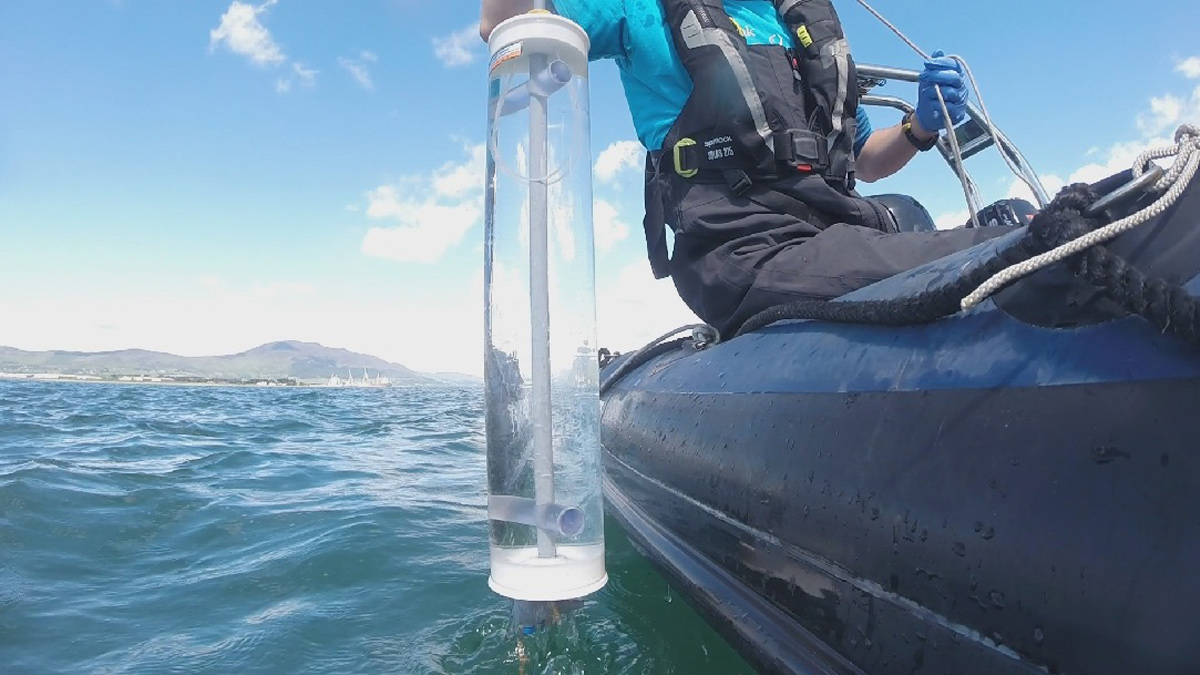
Water sample – Courtesy of AFBI
During this time, approximately 1,600 marine samples were collected within Lough Foyle and Carlingford Lough. Around 800 of these were analysed for marine nutrients and the remaining half analysed for E. coli.
Over the same period, around 3,200 freshwater samples were collected within both the Lough Foyle and Lough Carlingford catchments. Of the 3200 samples, approximately half have been analysed for freshwater nutrients, with the remaining 1600 being analysed for E. coli.
AFBI will complete the post-construction sampling programme once the new Irish Water assets have been put into operation.
Halfway there!
Spring 2021 saw the completion of the four NI Water projects and the commencement of the Irish Water programme of work. Tomasz Piadlo, NI Water’s Project Manager for SWELL, commented:
“We are delighted to successfully commission new wastewater infrastructure at Warrenpoint Wastewater Treatment Works and Newpoint Wastewater Pumping Station (Newry) located in the Carlingford Lough drainage basin and at Strabane Wastewater Treatment Works and Donemana Wastewater Treatment Works located in the Lough Foyle drainage basin.
“The work carried out at these key NI Water sites involved extensive upgrades of the existing wastewater assets to improve the quality of discharge to the respective waterways which impact on the shared waters of Carlingford Lough and Lough Foyle.
“The completion of these four sites marks a major milestone in the overall SWELL project and I would like to thank NI Water’s project management support team from McAdam and Construction Consultancy Services and all our local contractors – GEDA Construction, Water Solutions Ireland, GRAHAM, Enisca Ltd, BSG Civil Engineering Ltd and Deane Public Works – who have worked tirelessly through very challenging times to successfully deliver this new infrastructure.”
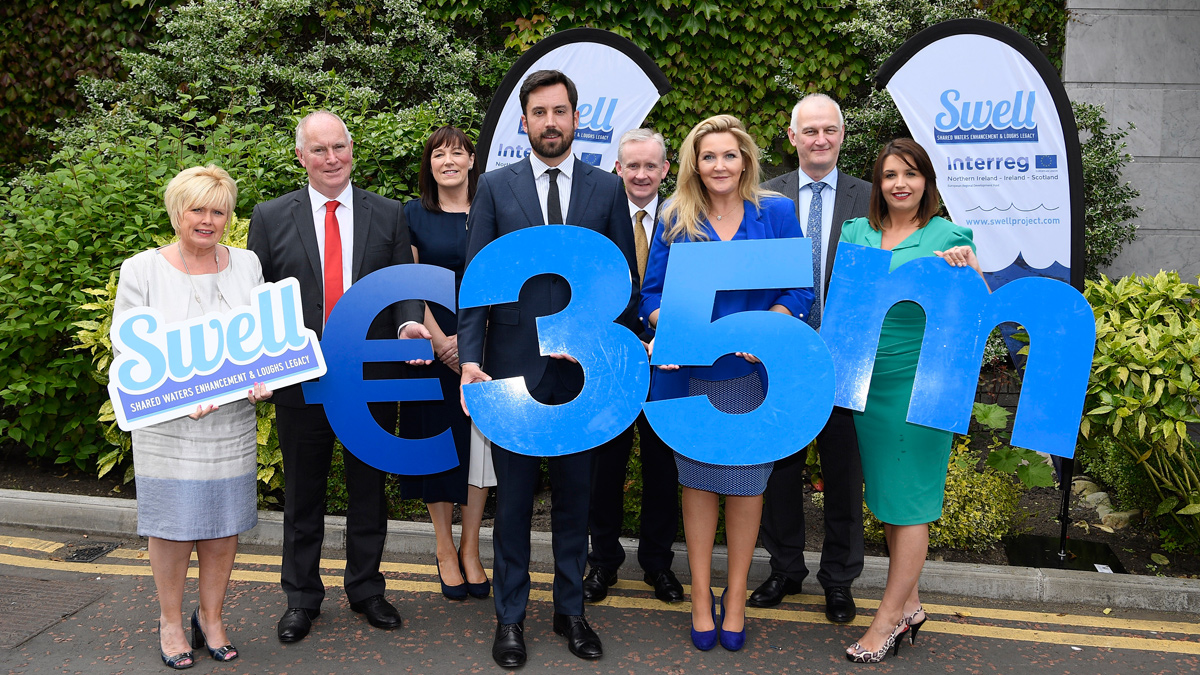
SWELL Partners pictured with match funders, SEUPB and local elected representatives at the launch of the project in 2019 – Courtesy of SWELL
Underlining the importance of the SWELL project Gina McIntyre, Chief Executive of the SEUPB said:
“Greater levels of cross border collaboration are essential so that we can improve the water quality of our shared waters and meet the relevant standards under the Water Framework Directive. SWELL is one of the highest value projects to be funded under the EU INTERREG VA Programme and as such represents a significant long-term investment in our natural water resources. Key infrastructure is now in place, and despite current restrictions, the project is delivering upon its objectives. I would also like to commend the SWELL partners, on both sides of the border, for the innovative solutions that they are making, to ensure that this project will be delivered on time.”






